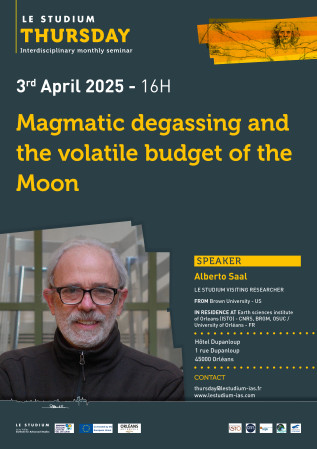Magmatic degassing and the volatile budget of the Moon
Hôtel Dupanloup
1 rue Dupanloup
45000 Orléans
France
Presentation
The Moon is generally thought to have formed and evolved through a single or a series of catastrophic heating events, during which most of the highly volatile elements were lost. Hydrogen, being the lightest element, is believed to have been completely lost during this period. We use considerable advances in secondary ion mass spectrometry (SIMS) to obtain improved limits on the indigenous volatile (C, H, F, S and Cl) contents of the most primitive basalts in the Moon—the lunar volcanic glasses and their olivine-hosted melt inclusions. Numerical modelling of diffusive degassing of the very-low-Ti glasses and direct measurement of high-Ti melt inclusions provide an estimate of high correlated amounts of water (H), carbon, fluorine, sulfur and chlorine. These volatile contents are very similar to primitive terrestrial mid-ocean ridge basalts and indicate that some parts of the lunar interior contain as much water as Earth’s upper mantle. Moreover, the measurements of the isotopic composition of hydrogen and sulfur dissolved in volcanic glass and olivine-hosted melt inclusions demonstrate that, in contrast to previous publications, there are large variations in hydrogen and sulfur isotope ratios produced during magmatic degassing. The least degassed samples provide an isotopic composition that is indistinguishable from that of bulk carbonaceous chondrites and similar to that of terrestrial values, implying a common origin for the volatiles contained in the interiors of Earth and the Moon. Our results indicate that, contrary to prevailing ideas, the bulk Moon might not be entirely depleted in highly volatile elements. Thus, the presence of volatiles must be considered in models constraining the Moon’s formation and its thermal and chemical evolution.
Speaker
LE STUDIUM Visiting Researcher
FROM: Brown University - US
IN RESIDENCE AT: Earth sciences institute of Orleans (ISTO) - CNRS, BRGM, OSUC / University of Orléans - FR









